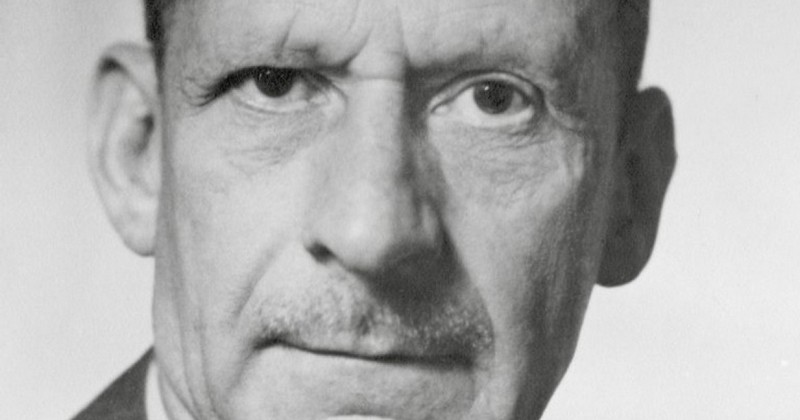Kurt Schneider: biography and main contributions of this psychiatrist.

One of the most influential psychiatrists in the research of mental disorders.
Kurt Schneider is, together with Karl Jaspers, the main representative of the Heidelberg School, an important antecedent of phenomenology and psychopathology with a Biological approach.
In this article we will analyze Kurt Schneider's biography and theoretical contributions, particularly those related to schizophrenia.in particular those related to schizophrenia, depression and psychopathy.
Biography of Kurt Schneider
Kurt Schneider was born in the year 1887 in the town Crailsheim, which is now in Germany, but at the time belonged to the independent kingdom of Württemberg. He studied medicine at the universities of Berlin and Tübingen, and in 1912 obtained a doctorate with a thesis on the psychopathology of Korsakoff's syndrome (or "psychosis").
After serving in the army during World War I, Schneider continued his training as a psychopathologist, philosopher and teacher. In 1922 he was hired as an associate professor at the University of Cologne. In 1931, he became director of the Munich Psychiatric Research Institute and head of psychiatry at a municipal hospital.
He collaborated with the German army as a senior physician and psychiatrist in the years of World War II. Subsequently, in 1946, he was appointed head of psychiatry and neurology at the University of Heidelberg, an institution that played a key role in his career.an institution that played a pivotal role in the later developments of academic psychopathology.
Schneider retired from professional activity in 1955; until that time he retained his position as dean in Heidelberg, obtained four years earlier. He died in October 1967 at the age of 80, leaving psychology and psychiatry a legacy that would have a remarkable influence.
One of the key points of Schneider's methodology was his particular interest in the analytic description of patients' subjective experience. In this sense his proposals may be related to the phenomenological methodand must be understood in a broader theoretical context: that of the Heidelberg school of psychiatry.
The Heidelberg school of psychiatry
Kurt Schneider is considered, together with Karl Theodor Jaspers (1883-1969), one of the main theorists of the Heidelberg school of psychiatry, whose core was located at the University of Heidelberg in Germany. This current was characterized by its approach to mental disorder from a biologistic perspective.
Jaspers is mainly known for his work on delusions; a very relevant aspect of his work is his emphasis on the importance of the topography (the formal aspect) of psychopathological symptoms, as opposed to their specific contents. Other relevant authors of the Heidelberg School are Wilhelm Mayer-Gross and Oswald Bumke.
The clearest forerunner of the Heidelberg School is Emil Kraepelin (1855-1926). This author created a classification of mental disorders according to their clinical manifestations, opposing previous systems that used hypothetical causes as the main criterion. Kraepelin's influence on modern diagnostic classifications is evident.
Contributions of this author
Kurt Schneider's most significant contributions to the field of psychopathology relate to diagnostic methods.
In particular, he focused on the most characteristic symptoms and signs of certain psychological disorders in order to systematize and in order to systematize and facilitate their identification, as well as the distinction of similar but not equivalent phenomena.
1. First-rank symptoms of schizophrenia
Schneider delimited the conceptualization of schizophrenia on the basis of a series of manifestations which he referred to as "first-rank symptoms", and which would help to distinguish this disorder from other types of psychosis. It is important to keep in mind that at the time the term "psychosis" also referred to phenomena such as mania.
The first rank symptoms of schizophrenia according to Schneider would be auditory hallucinations (including voices commenting on the subject's actions and thought echo), experiences of passivity (such as delusions of control), delusions of thought theft, thought diffusion and delusional perceptions.
The influence that this grouping of symptoms has had on subsequent diagnostic classifications has been very significant. Both the DSM and ICD manuals are largely inspired by the Schneiderian conception that there are core symptoms (such as delusions and hallucinations) that may be accompanied by other less specific symptoms.
2. Endogenous and reactive depression
Another of Schneider's most relevant contributions is the distinction between two types of depression: endogenous and reactive. two types of depression: endogenous depression, which would have a biological origin, and reactive depression.The distinction between "reactive depression" and "reactive depression" is more often associated with psychological disturbances, in particular due to negative life events.
The usefulness of this distinction is now highly questioned, largely because it is known that in so-called "reactive depressions" the functioning of neurotransmitters is altered, and that Schneider's idea is underpinned by a dualistic conception of psychology. Nevertheless, the term "endogenous depression" remains popular.
3. The 10 types of psychopathy
Today we understand psychopathy in a similar way to the antisocial personality disorder described by the major diagnostic manuals. These ideas owe much to another of Kurt Schneider's contributions: his description of psychopathy as an ambiguous deviation from normative behavior, and of the 10 types of psychopathy.
Thus, this author created a non-systematic typology, based purely on his own ideas, differentiating thus psychopathy characterized by abnormalities in mood and activity, the insecure-sensitive and insecure-ananastic typesThe psychopathic, the insecure-sensitive and insecure-anxious, the fanatical, the self-assertive, the emotionally unstable, the explosive, the insensitive, the weak-willed and the asthenic.
(Updated at Apr 13 / 2024)